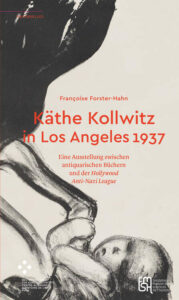 Käthe Kollwitz in Los Angeles 1937: Eine Ausstellung zwischen antiquarischen Büchern und der Hollywood Anti-Nazi League
Käthe Kollwitz in Los Angeles 1937: Eine Ausstellung zwischen antiquarischen Büchern und der Hollywood Anti-Nazi League
2022, DEUTSCH FORUM FÜR KUNSTGESCHICHTE, DFK PARIS
In June 1937, Jacob Zeitlin opened an exhibition of graphics by Käthe Kollwitz in his bookstore gallery in Los Angeles. It was the first exhibition of Kollwitz’s work in Southern California. The exhibition and the glamorous vernissage were co-sponsored by the Hollywood Anti-Nazi League for the Defense of American Democracy. The evening’s speakers were German writer and activist Ernst Toller and American composer George Antheil. Among the illustrious guests were Fritz Lang, Richard Neutra, Arnold Schönberg, George Gershwin, Kurt Weill and other celebrities from the film industry and the German-Austrian exile community. The Kollwitz exhibition became the focal point of the city’s central areas of conflict: it was not just a cultural event in Zeitlin’s bookstore gallery, but above all a targeted political action by the Hollywood Anti-Nazi League. Kollwitz’s work was thus caught in the crossfire of the conflict between the anti-fascist struggle of the Anti-Nazi League and the violent actions of National Socialist groups in Los Angeles. In this political tension, Käthe Kollwitz was perceived as an “anti-Nazi artist” and her exhibition was ascribed an active role in the fight against Hitler. The chapters of the book trace how the exhibition became the crossroads of four biographies: Käthe Kollwitz, Jacob Zeitlin, Ernst Toller and George Antheil.

